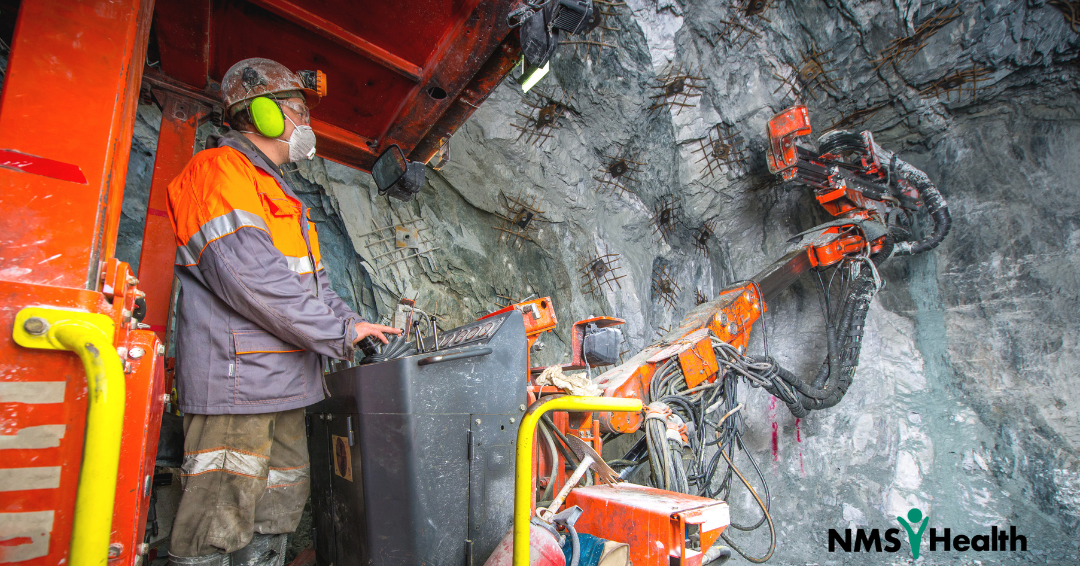The echoes of heavy machinery and the rhythmic pulse of operations form the backdrop of an industry where health risks extend beyond just the immediate hazards. When discussions veer toward mining risks, the spotlight often shines on dramatic events, like shaft cave-ins, eclipsing the subtler yet equally significant challenges. The Centers for Disease Control and Prevention (CDC) reminds us that a staggering one in four mine workers struggles with hearing problems. The gravity of the situation intensifies with age, as four out of five mine workers experience hearing impairment by the time they approach retirement age. Undeniably, employers can play a critical role in protecting miners’ hearing and preventing noise-induced hearing loss (NIHL).
NIHL is a permanent affliction that interferes with a mine worker’s ability to communicate with family, friends, and co-workers. Additionally, it can also create a workplace safety hazard when mine workers are unable to hear moving machinery and warnings.
Imagine the backdrop—conveying systems humming, drills in action—a bustling industry that resonates with productivity. Miners often find themselves exposed to sounds exceeding 80dB, and the risk escalates as the noise level rises. It’s disquieting to note that a significant number of miners endure noise levels exceeding 85dB on an eight-hour equivalent continuous exposure, and some even reach the peak exposure standard of 140dB.
Unraveling the Symphony of Noise Risks
Noise is the chief contributor to preventable hearing loss, and although noise exposure in mines has decreased over time, the mining sector still faces considerable risks. In fact, mining has the highest hazardous noise exposure of all major industries! Between 1999 and 2004, data highlighted that the mining industry exhibited a higher prevalence of hazardous noise exposure compared to other sectors. An astounding 76% of miners bear the daily brunt of hazardous noise. Additionally, historical exposure can leave a lasting impact over time, which underscores the urgency of prevention.
The mining realm introduces an array of clamorous elements:
- The pneumatic percussion drill, a principal source of mining-related noise hazards.
- Continuous and impact noise from extractive equipment, like continuous miners and long-wall shearers.
- Ancillary noise generated by ventilation fans and blowers.
- The chorus of engine, transmission, exhaust, and vibration noises from loaders, loader-dumpers, and haulage trucks.
- Conveyor system drives, and additionally improperly maintained conveyor systems as a whole.
Intricate and multifaceted mining operations harbor various noise-emitting processes such as drilling, cutting, conveying, and ore processing. Markedly, blasting underground differs greatly than on the surface. Those working in underground coal mines and coal preparation plants find themselves particularly vulnerable to hazardous noise exposure.
Employer Strategies for Protecting Miners’ Hearing
The responsibility of preventing NIHL rests on the shoulders of mining employers. To that end, these measures can prove instrumental:
Understand the Risks and Obligations: Employers must grasp the gravity of NIHL risks and their obligations. As noise exposure can extend beyond the workplace, employers should work to fully mitigate workplace noise exposure.
Stay up-to-date on Regulations: Noise exposure standards and regulations exist to safeguard workers. Get acquainted with the regulations that keep your team humming safely. Think Mine Safety and Health Administration (MSHA), NIOSH, and other industry guidelines.
Recognize the Impact: NIHL hampers communication, causes tinnitus and other hearing issues. Hearing loss can impact job performance, impede employee career progression in hearing-critical roles, and adversely affect a worker’s quality of life.
Conduct Audiometric Assessments: Employ standardized audiometric questionnaires to assess the individualized noise exposure of your workers. Recognize that the susceptibility to NIHL varies based on factors like exposure duration and individual traits.
Sustain Vigilance through Testing: Cultivate a rhythm of regular audiometric tests. Baseline and periodic assessments enable early detection and tailored intervention strategies.
Invest in Noise-Reducing Equipment: Modern, quieter equipment can significantly diminish noise risks. Solutions include:
- exhaust silencers or industrial mufflers
- partial cabs for surface-drilling rigs
- coated flight bars on continuous miners
- new dust collector fan designs
- a jacketed tail roller
- substituting mist for water in roof bolters
- structural modifications for longwall cutting drums
Emphasize PPE: Hearing protection devices, including earmuffs, semi-insert earplugs, and molded earplugs, stand as stalwart shields against hazardous noise for miners. Employers should adeptly select the optimal hearing protection for their workforce, ensuring proper usage and fitting. Alongside, comprehensive education on the significance of hearing protection is essential. Guarding against common misuse is pivotal to ensuring the effectiveness of these safeguards.
A Coda of Commitment
While orchestrating these components, keep in mind that the objective goes beyond mere compliance —it’s about the health and well-being of your mining family. Noise induced hearing loss isn’t an inevitability but a challenge to be met with diligence and strategy.
Investing in modern noise-reducing machinery, appropriate personal protective gear in conjunction with employee education, and routine audiometric testing can lay the foundation for employers’ protection programs. These areas hold immense potential for impact, shaping comprehensive strategies that ensure they’re protecting miners’ hearing. A steadfast commitment to mitigating NIHL aligns harmoniously with the overarching goal: a secure and safer work environment for your mining team.
Ready to Elevate Your Workforce’s Hearing Health? Partner with NMS Health for your audiometric screenings. With NMS Health you are not just identifying, intervening, and preventing noise-induced hearing loss, you’re investing in a safer, more harmonious future for your team. Get started today!


